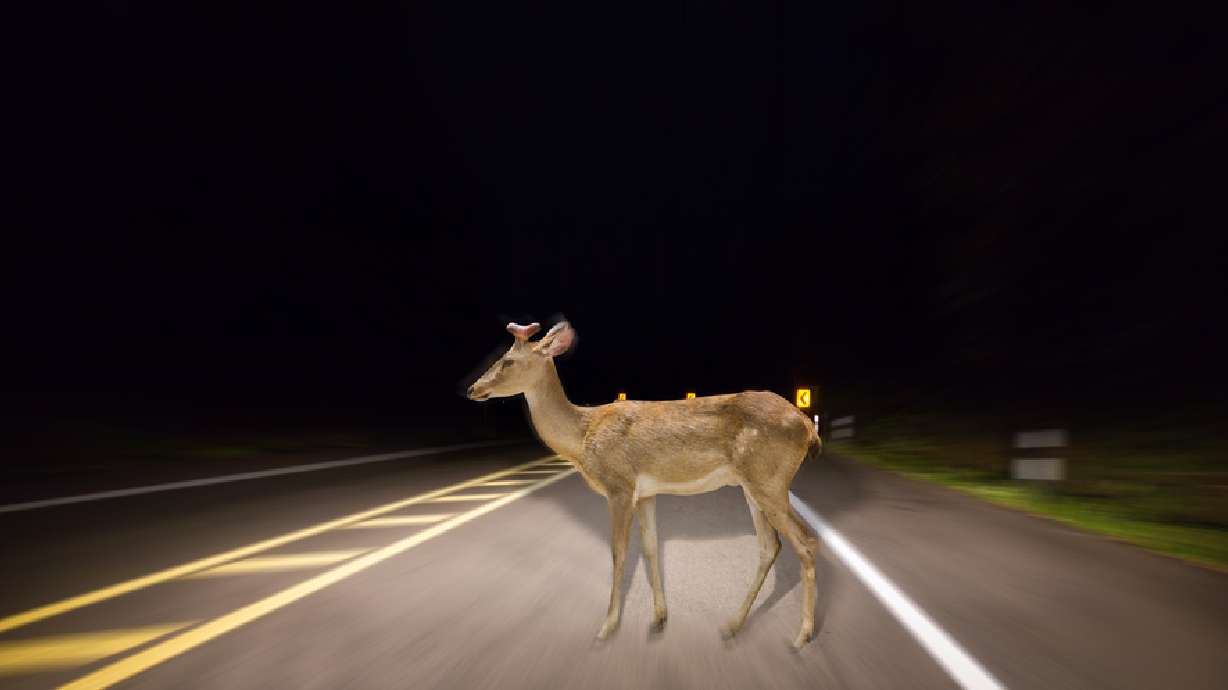Estimated read time: 3-4 minutes
This archived news story is available only for your personal, non-commercial use. Information in the story may be outdated or superseded by additional information. Reading or replaying the story in its archived form does not constitute a republication of the story.
SALT LAKE CITY — As temperatures continue to drop, deer movement becomes more frequent, as the animals migrate closer to roads and residential areas.
Feed is harder for deer to find when snow starts to cover the ground, according to Outdoor Life. This is why they move to lower elevations where forage is easier to find —which is why you see so many deer carcasses on the side of the road.
People are most likely to be involved in animal-vehicle collisions from October to December, according to a AAA news release. State Farm reported that there were 1.34 million animal collisions in the U.S. in 2017.
To help prevent hitting a deer, here are some helpful tips offered by AAA:
Keep your eyes on the road
The most basic rule of safe driving is to always stay focused on the road. Keeping your eyes on the road can also help you scan for animals ahead. AAA said that most animal collisions occur in the front of the car, so looking ahead down the road will help avoid a collision.
Be especially attentive during commuting hours
Deer are most active between the commuting hours of 5-8 a.m. and again during 5-8 p.m., according to a statement from AAA. If this is when you commute, make sure to keep an eye out for wandering deer or other animals.
Use high beam headlights
High beams are recommended for use at night, as reported by DrivingTests.com. They can help widen your range of visibility while driving when it's dark and can help you spot animals sooner. Just make sure to dim the headlights when there is oncoming traffic. High beam headlights can lower visibility for drivers facing the lights.
Where there is one deer, there are likely more
Deer tend to travel in large herds so if you spot a deer, make sure that there aren’t others nearby that could collide with your vehicle, AAA advised. This can be done by honking the horn to scare all the animals away.
Brake firmly and stay in your lane
If colliding with an animal is imminent, AAA reports that it is safer to brake firmly and stay in your lane than it is to swerve. Swerving can result in colliding with oncoming traffic, an object on the side of the road or can cause your vehicle to roll. It can also confuse the animal into not knowing which way to run.
AAA advises staying in your lane, even if it means you will hit the deer. The consequences of swerving can be far more fatal.
Do not approach wounded animals
If you do end up hitting an animal, AAA advises not to approach it. Wounded animals can be unpredictable and may cause injury if approached. AAA recommends calling the police or animal control if a wounded animal is blocking traffic.
Always wear a seat belt
Most injuries in animal collisions are a result of not wearing a seat belt, according to AAA. One of the easiest ways to avoid injury if you do hit a deer is to make sure your seat belt is properly buckled.








